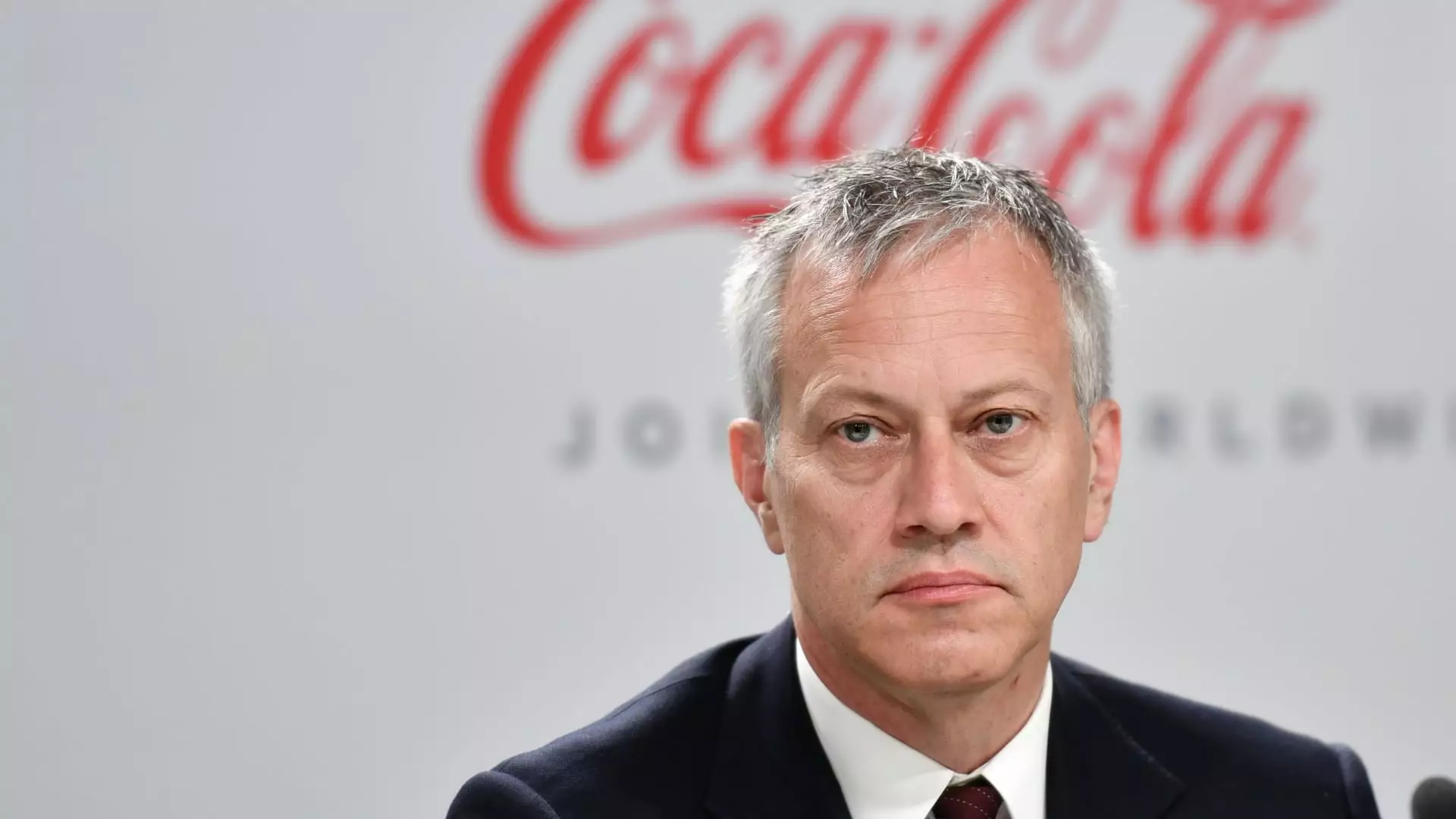In the wake of a recent E. coli outbreak linked to McDonald’s Quarter Pounder burgers, Coca-Cola’s CEO James Quincey expressed a cautious optimism regarding the potential effects on their beverage sales. In a statement during the company’s third-quarter earnings call, he downplayed the severity of the situation, asserting that the outbreak should not have a “large, significant impact” on Coca-Cola’s business. This perspective reflects not only Quincey’s confidence in their partnership with McDonald’s—Coca-Cola’s largest customer—but also their historical resilience in navigating crises.
The relationship between Coca-Cola and McDonald’s has flourished for nearly seventy years, with both companies relying on each other for growth and success. This partnership is especially pivotal as they face external challenges in a changing consumer landscape. Recently, Coca-Cola reportedly offered marketing support to McDonald’s for their $5 value meal promotion, illustrating how intertwined their operations are. Quincey’s emphasis on collaboration during tough times signals a commitment to mutual support, a necessary trait for survival in today’s competitive marketplace.
The outbreak, announced by the Centers for Disease Control and Prevention (CDC), involved 49 reported cases across ten states, marking a serious public health issue linked directly to identified ingredients in the Quarter Pounder: onions and fresh beef. While cooking procedures are designed to kill bacteria, the fact that a health crisis has arisen from a flagship menu item presents significant reputational risk for McDonald’s. In response, McDonald’s swiftly acted to pull the burgers from several Western markets, including states like Colorado and Kansas, which underscores the quick decision-making needed in crisis management.
McDonald’s President Joe Erlinger highlighted the company’s proactive response, assuring consumers of the safety of their remaining menu items. As the fast-food giant removes potentially hazardous ingredients from their supply, the focus shifts to rebuilding consumer trust—a challenging task during periods of negative media exposure. Moreover, the incident comes at a time when consumer spending in the restaurant sector has already been struggling, intensifying the challenges both McDonald’s and Coca-Cola face in maintaining their sales figures.
Despite facing sluggish consumer spending, Coca-Cola recently reported better-than-expected third-quarter earnings and revenues, attributed largely to increased pricing strategies. This raises an important question: how can both companies navigate these overlapping crises? As consumers become more price-sensitive during economic downturns, both Coca-Cola and McDonald’s are incentivized to offer value-driven promotions, such as discounted combo meals that appeal to budget-conscious customers.
Coca-Cola’s investment in promotional marketing for McDonald’s not only aims to cushion potential sales declines from the E. coli situation but also underscores a broader strategy to off-set diminishing consumer spending. By promoting cost-effective meal options, they are hoping to entice customers back to fast-food locations, allowing for a symbiotic recovery for both brands.
In the fast-moving consumer goods landscape, adaptability is key. For Coca-Cola and McDonald’s, navigating through this health crisis is merely a chapter in a long-standing partnership. As both brands work to reassure their customer base and reestablish their reputations, this incident may serve as a learning experience. By bolstering their supply chain practices and communication strategies, they can better prepare for future crises.
Ultimately, the relationship between Coca-Cola and McDonald’s is not just about beverages and hamburgers; it’s about two industry giants rallying together in the face of adversity. Although the current challenges are significant, they also present opportunities for innovation, collaboration, and renewed commitment to consumer safety. The next steps for both corporations will involve not just damage control, but also strategic planning to ensure sustained growth despite the obstacles posed by external threats like health-related outbreaks.

